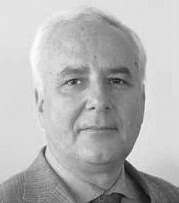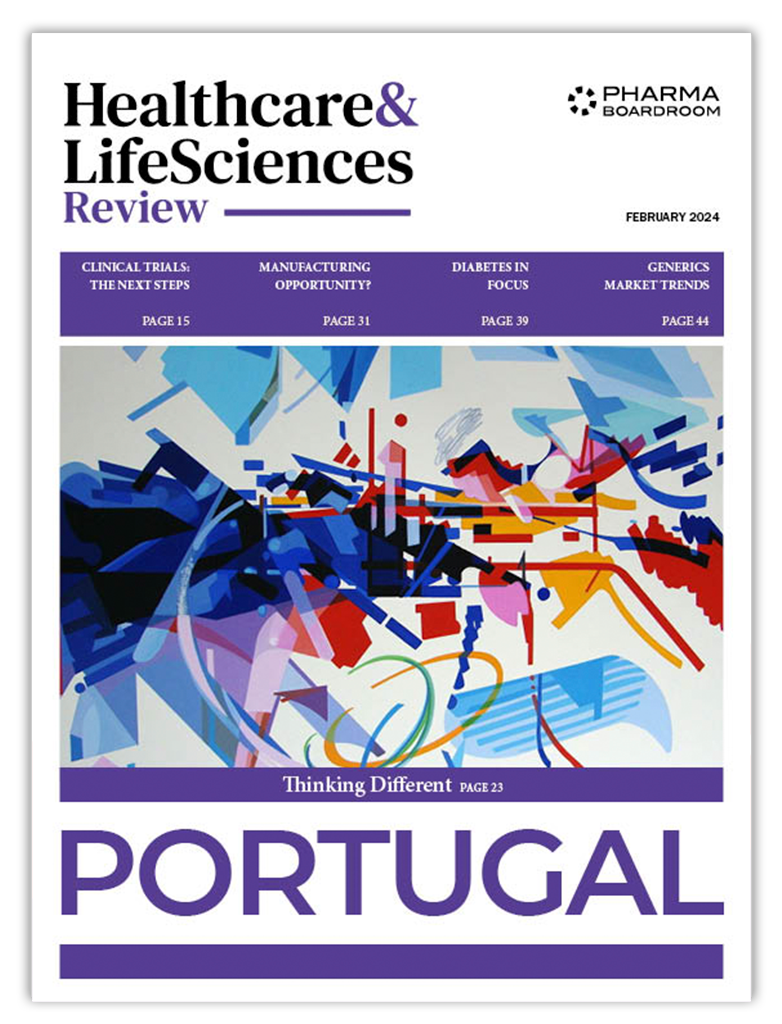Novo Nordisk has a long history in Serbia compared to many of the other multinational companies present in the country today. The separate entity Novo Nordisk d.o.o was founded in 2006, but you have been present in the market for over 20 years. Given this history, how would you describe the operation as it stands today in Serbia?
Novo Nordisk officially started operations in Serbia on June 1st 1990. This was not the best period in Serbian history, as it was just the start of the crisis and break up of Yugoslavia. Former Yugoslavia had a very well developed pharmaceutical industry. Galenika, the biggest Serbian pharma company at that time, had a contract for local production of insulin with Lillly, and it was only possible to do business through local production and drug licensing agreements at that time. It was Hemofarm that invited us back in 1994 to start local production of porcine and human insulin in vials. Such strong local producer like Hemofarm helped us gain market share during the 1990s.
Frankly speaking, from the beginning Novo Nordisk has been focused on delivering insulin in pen devices. Novo Nordisk was the only that took the decision to continue delivering insulin to the country in 1999, which was the year of another crisis due to NATO intervention in Serbia. This was truly one of the company’s most important milestones. It was Novo Nordisk Commitment for social responsibility, proven in real life situation. Hemofarm also helped us a lot, and we supplied the market with insulin for more than year and a half.
At the beginning of 2000s, the organisation was very small with only few employees. But after 2001, the Serbian operation began to receive strong support from our International Operations through the regional head office in Greece, and the company started a long-term marketing effectiveness project that set the plan for our development and growth in Serbia. We spent three very exciting months with business analysts and experienced people from abroad who understood the way that Novo Nordisk operated in other, less disrupted markets, and we learned quite a lot. We brought in eight new employees, which was another major milestone for Novo Nordisk in Serbia and a big change for the existing staff that established a lot of new departments: medical for clinical trials, marketing, finance and so on.
By 2003 we had completed this restructuring. I took responsibility for leading the organisation at the end of 2002. In those early days I relied a lot on knowledge and experience of our neighbouring countries, because everything that was happening in Serbia had already happened there in the previous years. It was an excellent opportunity to learn from others’ mistakes, take advantage of their experiences and approach things in an organized manner.
In the meantime Novo Nordisk’s cooperation with Hemofarm declined due to improved own organisation, but also due to treatment modernization. When the number of patients using insulin vials dropped below 10%, it was not reasonable to keep local production for such a small number of patients. One of the other ideas was to produce drugs for Russian market, but big countries always prefer to have production for essential products, like insulin, on their own territory. We realised and mutually agreed that it was reasonable to terminate the contract at that time.
Novo Nordisk has had an excellent market share throughout its history in Serbia. Today however, you have competitors in the market. Sanofi Aventis has been present for some time and Elli Lilly are currently establishing representative office in the country. How do you assess the issue of competition in the marketplace for Novo Nordisk today?
As a result of our history in the country we gained a very large portion of the insulin market share in Serbia, and this is still the case today. Serbia is the only country other than Denmark in the world where Novo Nordisk has such a large share of the market. As we were the only company delivering insulin here at the end of 1999, our market share was 100%. However, Sanofi Aventis entered the market in 2005, and have gained around 13% of the market until nowadays.
Locally, Sanofi is our main competitor, but the difference between Novo Nordisk and its competitors is that we are focused much more on diabetes, and are using most of our resources in one therapeutic area. We are performing a lot of non-branded activities with the idea of improving diabetes awareness in Serbia, but there is still a lot of room for improvement.
When I took over responsibility for heading the organization, my first question was what is the real need of healthcare system? The answer is simple – knowledge. Being isolated for some ten years, our previously well-established diabetes healthcare system was completely ruined. We had to start from the scratch, with very thorough education of specialists. In 2003 we held a national diabetes academy, which consisted of three days of meetings with presentations and workshops. We dedicated two and a half years to organize meetings and educate specialists in diabetic care in order to improve overall awareness and their knowledge. Majority of our budget was spent on such activities. A national patient registry had established in the meantime as well.
However, in 2007 and 2008, the healthcare system on the primary level was completely reorganised, and as a result of that, previously established diabetes healthcare centres in outpatient clinics were closed. The patients moved from diabetes dedicated doctors to GPs, which was a challenging time both for us and the patients. We had realised that we had to do something, and we offered to medical faculties, the ministry of health and the health insurance fund our strong support in process of education for GPs. But when you have to educate GPs it means that you have to educate 5000 people. This is a very tough task. Today however, we are proud to say that almost 4,500 GPs in 2 years went through our system of education. We could not have done this without the help of dedicated and innovative workforce.
There are about 600,000 diabetes sufferers in Serbia and 50% remain undiagnosed. Given this, now is Novo Nordisk approaching the education of patients?
This is really the biggest part of our job and of course the most difficult. During the 1990s it was almost impossible, but even then we took big steps for that difficult period and organised summer camps for children with diabetes. This was done in cooperation with Serbian patient associations. We support the associations today as well in their activities, and education in their centres. We have a lot of activities going on throughout the year, not just on World Diabetes Day. Two years ago we launched a media campaign with the aim of increasing awareness of diabetes, because very often people are not aware of the late stage complications of diabetes.
I must also stress that we are trying to do a lot for haemophillia patients in a similar manner. We have supported for years now camps for children with haemophillia. We feel privileged that our factor VIIa, which is life-saving therapy sometimes has helped many Serbian patients throughout our history here.
One of the interesting things about Novo Nordisk is the way that its staff get involved in projects to improve awareness, more so than many other pharmaceutical companies. Is this the case here in Serbia?
From year to year we have always new initiatives and challenges, and this is something that really stimulates people. All of us have to find something in our professional life that satisfies our spirit, and this company offers a lot of that to its staff. I believe that the company’s philosophy is a big driver in its success.
As general manager, what are your biggest priorities today? What do you want to achieve with Novo Nordisk in Serbia?
We have to work even more to improve the quality of treatment for patients, and we have to invest more in education. When you have a drug as good as insulin is today, if you are using it in an appropriate way and if patients are following all suggestions about food intake and physical activity, it goes a long way, but you can always do more.
It seems that Serbia is a great place for conducting clinical trials. For Novo Nordisk, how preferable has it been?
Novo Nordisk Serbia has a department dedicated to clinical trials and has been doing clinical trials for six or seven years here. These are mainly GCP trials, registration or positioning trials. From my point of view clinical trials present a unique opportunity for Serbia because they offer the country a chance to capitalize on its infrastructure and its knowledge. From a financial perspective, clinical trials offer pharmaceutical companies like Novo Nordisk a chance to give something back to the country, and from a scientific point of view it is also very exciting because from small country like Serbia, it is difficult to get articles published in highly rated journals.
We are not performing only diabetes trials in Serbia, but also in haemophilia. We are also a part of the biggest trial regarding cardiovascular risk in diabetes called LEADER, which is a privilege for such a small country to be part of.
We are also very successfully participating in one postmarketing growth hormone study called International Outcome Study evaluating safety and efficacy of growth hormone treatment both in children and adults.
You have been with Novo Nordisk for many years – how would you characterize your personal management style?
To start a small organization from scratch and grow with it to become a leader is a very good professional experience and a very exciting one.
We have an interesting generation gap at Novo Nordisk Serbia. There are three employees who started with the company from its very beginning. One of my colleagues has seniority of more than 20 years. When this experience is combined with the energy, knowledge and enthusiasm of young people, that is actually the recipe for success.
However, these days the young people that are reporting to me are maturing with the company; some have started their career and have already been working in the company for nine years and they all know that they can contact me and ask for whatever they need. My door is always open. My duty is really to develop people, support them, and what I expect them to do is perform their duties in the best possible way, and to have energy while doing it. I am always asking people to bring ideas to the table and it is not up to me any more to think of new projects. I am here to support my team, to judge if their ideas are valuable for the company or not, to discuss and challenge plans.
Do you have a final message that you would like to send to our readers about Novo Nordisk here in Serbia?
When I participate in our international management meetings, I feel as though all of us believe we are doing something special in our particular markets, but when you go to these meetings, you understand that this feeling is common since it comes from the extremely positive philosophy that Novo Nordisk is trying to spread in every country where it operates. It is no coincidence that we are well-established in the world market, but I believe that in some way, we have reached this position because of our history, and because through our philosophy and the Novo Nordisk Way, we show dedication to both patients and doctors. We will try to maintain this image of our company in Serbia in the future as well.







